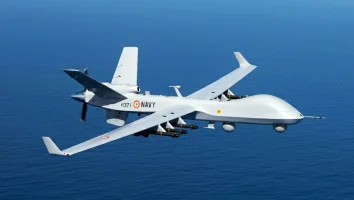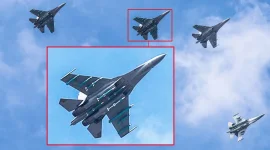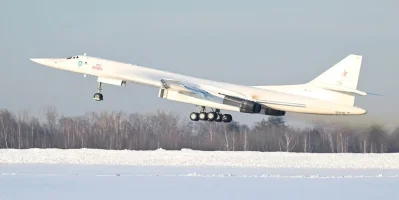- Views: 4K
- Replies: 18
India and Russia are once again in talks regarding India's potential purchase of the sophisticated "Container-S" over-the-horizon (OTH) radar, also known as the 29B6 "Container." Sources familiar with the matter indicate these discussions are proceeding on a government-to-government basis.
This renewed engagement comes as both countries are also reportedly considering a similar direct governmental agreement for Russia's Voronezh OTH radar.
These moves suggest India is actively working to significantly strengthen its air defence systems, particularly against difficult-to-detect stealth aircraft and long-distance aerial threats.
The Container-S is described as a state-of-the-art Russian over-the-horizon radar designed for monitoring vast airspace and detecting ballistic missiles from very far away.
It can reportedly identify airborne threats, such as stealth aircraft and ballistic missiles, at distances greater than 3,000 kilometers and at altitudes beyond the reach of many standard radar systems.
Over-the-horizon radars like the Container-S achieve such long ranges by bouncing radio waves off the Earth's ionosphere, allowing them to 'see' beyond the curve of the Earth.
The first operational Container radar system, situated near Kovylkino in Russia's Mordovia region, began service in December 2013 and was declared fully combat-ready in 2019. Russia has plans to establish a second such radar site in Kaliningrad.
Acquiring the Container-S radar would support India's ongoing efforts to upgrade its national air defence network. This move is seen as a response to changing security challenges in the region, especially the development of stealth aircraft and ballistic missiles by potential adversaries.
The presence of advanced platforms like China's J-20 stealth fighter, and reports of interest from other nations in acquiring similar capabilities, are prompting India to focus on technologies that can counter these low-observable threats and help preserve its strategic military balance.
The Container-S system's capacity to detect such targets from great distances would greatly improve India's ability to monitor its airspace and receive timely warnings of potential attacks.
The discussions for a government-to-government agreement for the Container-S are reportedly part of a wider framework of defence collaboration between India and Russia, which also encompasses negotiations for the Voronezh OTH radar. Government-to-government deals in defence often facilitate the transfer of sensitive technologies and can streamline procurement processes.
The Container-S radar's adaptable, modular construction and its extensive reach would make it a valuable addition to India's current air defence assets, which include the S-400 missile system and locally developed ballistic missile defence programs.
Incorporating the Container-S radar into India's defence infrastructure is expected to create a stronger shield against a wide range of aerial threats, from conventional aircraft to more advanced systems.
Its capability to spot targets at very high altitudes and across enormous distances would allow the Indian Air Force (IAF) and other defence services to react swiftly and effectively to possible airspace violations or missile attacks.
Furthermore, the radar's design, known as a bistatic OTH configuration (where the transmitter and receiver are in different locations), improves its ability to operate effectively even when faced with electronic jamming attempts, making it a vital tool in complex security situations.
Key Features of the Container-S Radar
The 29B6 Container-S radar system is distinguished by several advanced characteristics.It operates as a bistatic over-the-horizon radar, meaning its transmitter and receiver components are geographically separated, and it uses high-frequency (HF) radio waves, reportedly employing surface wave propagation techniques for improved detection.
Key operational attributes include its capacity for long-range detection, spotting airborne targets over 3,000 kilometers away, which is crucial for early warning.
It is also specifically engineered for tracking ballistic missiles, significantly boosting strategic defence.
The system provides thorough long-distance airspace surveillance, vital for identifying stealth aircraft. It can detect objects at altitudes up to 100 kilometers and offers a wide surveillance arc of 240 degrees, covering extensive geographical areas.
Its receiving antenna array, consisting of 144 masts, reflects a modular design that allows for flexibility and future upgrades.
The existing operational radar in Mordovia, Russia, and a future one planned for Kaliningrad highlight its strategic value.




